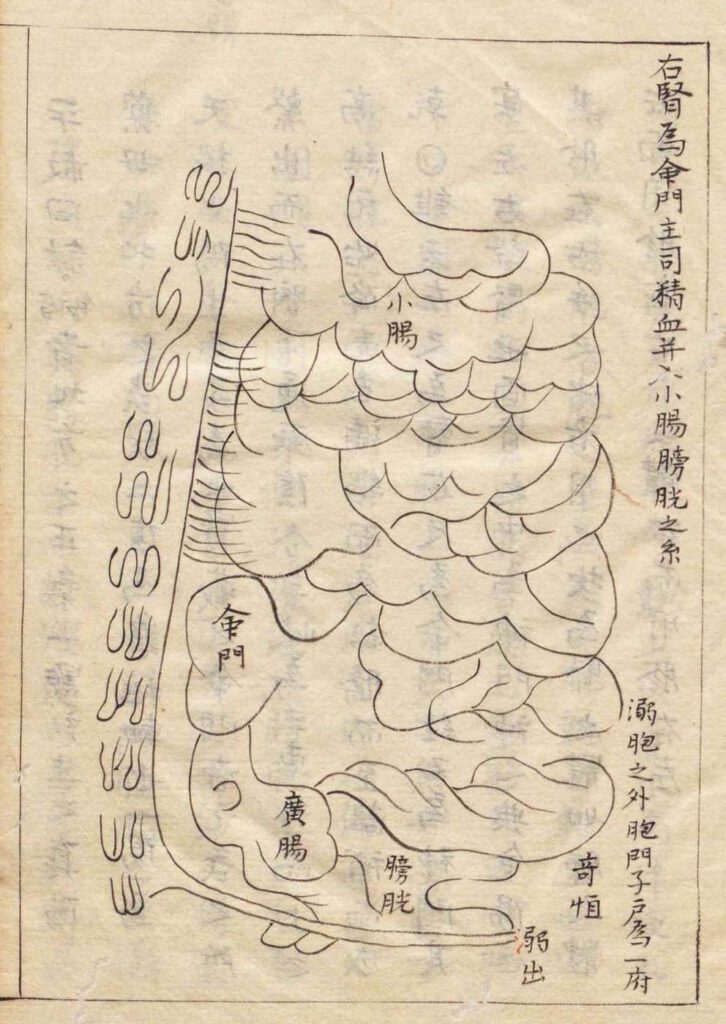

No title. The right kidney as the Gate of life. Kajiwara Shōzen 梶原性全 (1265–1337) Man’anpo 万安方, 1315–27, scroll 54. Edo 江戸 period (1603–1868) manuscript. National Archives of Japan.
‘The Right kidney as the Gate of life governs blood and essence and enters the small intestine and bladder system’, You shen wei mingmen zhusi jingxue bing ru xiaochang pangguang zhi xi 右腎為命門主司精血並入小腸膀胱之系. Wang Haogu 王好古 (1200–64?) The Great Teaching of Yi Yin’s Decoction Classic Propagated by [Zhang] Zhongjing, Yi Yin tangye Zhongjing guang wei dafa 伊尹湯液仲景廣爲大法, 1234. Japan, Edo 江戸 period (1603–1868) manuscript. National Archives of Japan.
In Chinese medical theory, the kidneys do not take part in the production of urine (discussed in image 4). Instead, they are key repositories of the body’s vitality. The right kidney, or ‘Gate of life’ (ming men 命門), is the source of ‘original qi’ (yuan qi 元氣) and functions as the storehouse of reproductive essence (that is, semen in the case of men; eggs in the case of women). This right side view of a human torso centers on the Gate of life. It shows the connection of the Gate of life to the spinal fluid (sui 髓). The pathway of the spinal fluid connects the Gate of life not only to the genitals, but also to the heart (see image 1). Therefore, the text explains, ‘the Gate of life issues from the heart.’ This heart-kidney connection offers a physiological explanation of how one’s state of mind affects vitality: ‘When one tires out the qi of the heart, the Gate of life is also affected. Essence and blood become exhausted, and marrow and vessels weaken. And so, to strengthen essence and blood, beware of tiring the mind!’